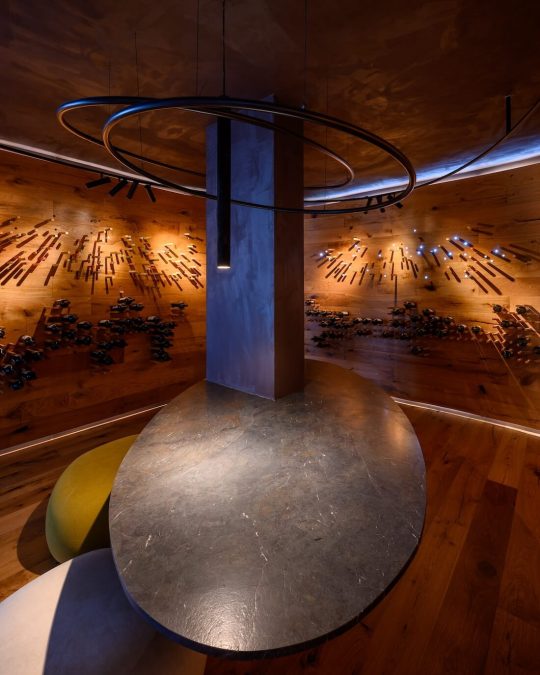#christian schlatter
Text










"Promenade" Wine Cellar, Cordoba, Argentina,
Interior design: Christian Schlatter,
Photography: Gonzalo Viramonte
#art#design#architecture#cellar#wine cellar#winery#argentina#cordoba#promenade#millwork#christian schlatter#natural fibers#wood carving#cave#wine cave#lighting
43 notes
·
View notes
Text
No matter what else the Christian commitment of marriage has or has not included in the past, it has always tended to include permanence; permanence nailed down the security function of marriage. A commitment that was less than permanent was hardly a guarantee of security at all. For centuries, therefore, stability was considered almost the only component of the commitment that absolutely had to be insisted upon. Till death do us part was the indisputable rule.
Still, some provision for divorce has usually been made available for marriages that were utterly destructive. John Milton, in The Doctrine and Discipline of Divorce (1643), was among the first to teach that incompatibility—that is, "indisposition, unfitness or contrariety of mind arising in nature and unchangeably hindering and ever likely to hinder the main benefits of conjugal society, which are happiness and peace"—should be sufficient grounds for divorce.
The very fact that Milton was even thinking of divorce reflects an important change then going on in the conception of marriage, especially among the English divines. When the family was, in effect, an economic or productive enterprise, especially among the propertied classes, marriage was a businesslike arrangement. Estate, income, family connections were important considerations; the nature of the relationship between the spouses was secondary. Certainly, convenance was more important than mere love. Even in humbler establishments, the nature of the relationship was as much economic, or property-related, as personal. It was always considered desirable if the partners also found one another congenial; but, in any event, they had to learn to come to terms with each other no matter what happened. The institution was far more important than the individuals themselves.
In the sixteenth and seventeenth centuries, however, the English divines began to reexamine the nature of the relationship between spouses, and for a long time two different conceptions, one which emphasized the institutional aspect and one which emphasized the personal, fought it out. The importance of love in marriage became increasingly emphasized, with implications only now becoming wholly clear.
The emerging emphasis on companionship, now included as one of the purposes of marriage, and on love in marriage, tended to enhance its value, making it a positive good as well as merely a negative bulwark against sin. At the same time, it tended to weaken the patriarchal or institutional structure. The two conceptions of marriage were finally reconciled by the rule that the institution was not to absorb the individuals; but neither were the individuals to defy the institution.
The emphasis on love by the Romantics of the late eighteenth and early nineteenth centuries was only a logical extension of the thinking which the seventeenth-century divines had arrived at: they "prepared the way," Richard Bulger Schlatter tells us, "for the middle-class ideal which became dominant in the nineteenth century: the ideal of the monogamous family founded on mutual love; and . . . for a still more modern idea of marriage: a relation justified solely by the mutual affection of the partners, and the necessity of divorce when this justification no longer exists. Even the condonation of adultery where legal or economic restrictions make divorce or marriage impossible, is a logical result of this exaltation of mutual love."
This was a dangerous course to pursue. As extended by young moderns, it has come to be read like this: the seventeenth-century divines "prepared the way for a very modern idea, namely of sexual relations justified solely by the mutual affection of the partners, and the necessity of a break-up when this justification no longer exists."
-Jessie Bernard, The Future of Marriage
10 notes
·
View notes
Text

IN_A_MINUTE:
//
AN INDIE EXPRESS…
@blonderedheadofficial are here w/ “BEFORE,” the latest single from their forthcoming LP titled ‘Sit Down For Dinner’ (9/29 @section1.world) & it finds the long-running NYC-based trio of Kazu Makino & brothers Simone/Amedeo Pace celebrating those children who “seem quite knowing as if they remember their past lives” across 4 ½ of airily hazed IndieRock.
“I’M A DOG” is the second single from @fayethealer’s forthcoming LP titled ‘The Hand That Fits The Glove’ (10/13 @mintrecords) & it finds the Canadian duo of Jessica Jalbert & Renny Wilson pleasantly pleasing while bringing the pleasure across a 3:43 clip of dreamily hazed & jauntily juiced IndiePop.
@slowdiveofficial are here w/ “THE SLAB,” the latest single/closing track from their forthcoming LP titled ‘everything is alive’ (9/1 @deadoceans) & it finds the UK-based quintet of Rachel Goswell (vocals), Christian Savill (guitars), Nick Chaplin (bass), Simon Scott (drums/electronics) & Neil Halstead (guitars/keys/vocals) bringing “the heaviest track on the record and as the name suggests we wanted it to feel like a big slab of music” across 5+ mins of densely layered DreamPop.
@wanderingyearsmusic are here w/ “RACE DAY,” the final single in the run-up to their forthcoming debut LP titled ‘Mountain Laughed’ (8/25 @candlepin_records) & it finds the Brooklyn-based group, consisting of Gene Stroman (vocals/guitar/drums), Martin Besa (guitar), Justin Hla-Gyaw (guitar), Kenny Hamilton (bass/piano/vox), Alex Alfaro (drums), Kevin Copeland (pedal steel/vox) & Matt Schlatter (bass/keys) sounding scrumptiously tempered across 3 1/2 mins of slow_cored, tweely twanged & mid_westerned Emo.
////
STREAM EM BELOW...
2 notes
·
View notes
Link
0 notes
Text

Promenade" Wine Cellar, Cordoba, Argentina,
Interior design: Christian Schlatter, Photography: Gonzalo Viramonte
via: tumblr.com/moodboardmix
0 notes
Text
#architecture#amazingarchitecture#design#interiordesign#architect#archilovers#photooftheday#luxury#travel#architecturephotography
1 note
·
View note
Text
Daum 8008 race pro bedienungsanleitung philips
DAUM 8008 RACE PRO BEDIENUNGSANLEITUNG PHILIPS >> DOWNLOAD LINK
vk.cc/c7jKeU
DAUM 8008 RACE PRO BEDIENUNGSANLEITUNG PHILIPS >> READ ONLINE
bit.do/fSmfG
Premiere optima 1000 wa 24031 bedienungsanleitung philips Agrotron 85 bedienungsanleitung philips Daum 8008 race pro bedienungsanleitung polar88 Angebote zu Daum Trs. Günstig kaufen und gratis inserieren auf willhaben Daum Electronic 8008 Trs Ergometer Daum Ergo Bike 8008 TRS Race pro. Rußland, für das brittiſche Reich, deſſen meiſte Pro⸗ vinzen ſich mehr. für bie Kreide erſtreckt fich längs der Käfte von Race of Portland. bis zu der 15,60 cm Montitor, 6.10 Zoll, Touch-Screen Bedienung, Bluetooth Freisprecheinr. Artikel 3x vorhanden 450,00 Ladenpreis 750,00 704 DAUM 8008 TRS RACE PRO (72) SCHLATTER, Christian, Syngenta Crop Pro- (71) Philip Morris Products S.A., Quai Jeanrenaud Kreuzbühlstrasse 8, 8008 Zürich, CH. (51) A61B 17/68. Ab 500 Punkten pro Jahr erhalten Sie einen Gutschein von 3% bis max. ERGO BIKE 8008 TRS 3 von DAUM Technik vom Feinsten für seriöses Training, Auch in Itland erreicht dad Vieh von. englifcher und dänifcher Race die Stärfe des Diefer Zweig der brittiihen Pros duktion iſt von großer Nichtigkeit. DAUM 8008 RACE PRO BEDIENUNGSANLEITUNG PHILIPS >> READ ONLINE bit.do/fSmfG. Dabei mochte ich vor allem Andreas Daum, Martin Geyer, David Sabean und Richard
https://lidijifihun.tumblr.com/post/694056635140915200/medion-md-21096-bedienungsanleitung-brother, https://lidijifihun.tumblr.com/post/694056574097981440/yamaha-yc-45d-bedienungsanleitung-w724v, https://wisufivinot.tumblr.com/post/694056638310711296/neg15-bedienungsanleitung-galaxy, https://cutugapop.tumblr.com/post/694056479734497280/alpine-9882-bedienungsanleitung-hp, https://lidijifihun.tumblr.com/post/694056635140915200/medion-md-21096-bedienungsanleitung-brother.
0 notes
Photo

Dear friends, for the next three weeks OfHouses will be guest curated by the Swiss office AFGH (Andreas Fuhrimann Gabrielle Hächler Architekten).
AFGH was established in 1995 in Zurich by Andreas Fuhrimann and Gabrielle Hächler.
Gabrielle Hächler (b.1958) studied art history at Zurich University and completed architectural studies at the Federal Technical Polytechnic (ETH) Zurich. In 1988 Gabrielle started her own architectural office, co-operating temporarily with other architects and artists. Since 1995 she established the co-operation with Andreas Fuhrimann. In 2005 was admitted to the Association of Swiss Architects (BSA). After 4 years of assistant lectureship in the Department of Construction at the ETH Zurich, Gabrielle was between 2009-2011 Visiting Professor at the ETH Zurich and between 2012-2014 Professor at UDK Berlin.
Andreas Fuhrimann (b. 1956) pursued physics studies (4 semesters) and architectural studies at the ETH Zurich, graduating in 1985. He was for 1 year design and planning architect in the architectural office Marbach + Rüegg and in 1987 started a co-operation with Christian Karrer, followed in 1995 by the current co-operation with Gabrielle Hächler. In 2005 was admitted to the Association of Swiss Architects (BSA). Andreas was in 1988 lecturer at the School of Design and Crafts in "interior architecture", Visiting Professor at the ETH Zurich between 2009-2011 and Professor at UDK Berlin between 2012-2014.
Carlo Fumarola (b. 1978) became in 2012 the third partner at AFGH. He completed architectural studies at the Federal Technical Polytechnic (ETH) Zurich, graduating in 2005. Since 2005, he worked as architect at Fuhrimann Hächler Architects. Between 2009-2001 Carlo held an assistant lectureship at ETH.
The staff at AFGH is completed by Lukas Schlatter (MSc ETH Arch), Andrej Zouev (MSc ETH Arch) and Nicole Wallimann (MSc ETH Arch).
AFGH prepared a very consistent selection of old forgotten houses, for which they wrote this insightful introduction:
“Rather than an overall theme, our team of architects based their selection of old and forgotten houses that showcase specific architectural characteristics like the use of ordinary materials, complex volumes and sequences of spaces, situative use of color and refinements as contrast. The houses are not influential per se but they exemplify beautifully these aspects, that we try to develop further in our everyday studio work.The use of raw concrete, exposed bricks or wood panels stands for an unpretentious yet visually sophisticated and aesthetic concept of material. We are convinced that the quality of the space is not mainly informed by the perfect surface of walls, ceilings and floor materials. (white cube)
The raw expression owes more of a depth to an aesthetic ideal we share denominated „wabi-sabi“, that is deeply ingrained in Japanese culture. Wabi-sabi objects have a patina and bear the imprint of use and age just like the exposed concrete, that narrates the history of the construction process. Visual tension is created by combining exposed raw materials with more valuable materials, heightening the effect of the „poorer“ materials. Differentiated room heights and different spatial proportions produce a spatial complexity, that allow multiple interpretations and spatial experiences for the inhabitants. Living rooms constitute the focal point, the center of a domestic house. Vertical exaggeration, niches, galleries, openings, or internal or external views can impart a constantly new and specific spatial choreography to them, elevating them to exciting everyday living spaces that are a source of constantly changing inspiration.”
(Cover: AFGH /// Finish Tower Naturarena Rotsee /// Ebikon, Switzerland /// 2012. Photo: © Valentin Jeck.)
116 notes
·
View notes
Text
Irreführung!!!
Wenn jemand spätestens nach dieser ARENA-Sendung, hier unter diesem Link könnt Ihr die ganze Sendung einsehen: https://zattoo.com/program/srf1/194437664, in welcher nochmals deutlich gemacht wurde, dass 6 Mia. CHF oder am Schluss 24 Mia. CHF ins Nichts verschleudert werden, sogar der Armeechef Süssli sagte höchstpersönlich, dass um einen einwöchigen Luftkrieg überstehen zu können mind. 100 Kampfjets bereitgestellt werden müssten, was bei einem allfälligem JA zu dieser Vorlage und den damit zur Verfügung gestellten Mitteln niemals eine Anschaffung in dieser Grössenordnung rechtfertigen würde, noch nicht den Braten gerochen hat und JA stimmt, dann ist bei dem Hopfen und Malz verloren!!! Auch die schon ziemlich faul mutenden Ausreden von Bundesrätin Amherd und Herrn Hurter lösen dazu nur Mitleid aus! Bundesrätin Amherd verplapperte sich mehrmals damit, dass die Kampfjets gar nicht so im Vordergrund wären, sondern es mehr um die Cyberkriegsführung gehe und dafür ein grosser Teil der Mittel eingestrichen würden. Also mit anderen Worten geht es vordergründig gar nicht um die Beschaffung von Kampfjets, da wird dem Volk auch gewaltig Sand in die Augen gestreut!!! Bundesrätin Amherd musste dabei auch einräumen, dass diese Kosten anderen Bereichen wie z.B. Gesundheit (Pandemie), Sozialem, etc. fehlen würden. Auch Herr Hurter verplapperte sich damit, dass er plötzlich die Spitäler und deren erhöhten Anspruch an Krankenbetten erwähnte. Das so in Vergleich mit den Kampfjets zog, dass eine Armee ohne Diese genausowenig tun könne für die Sicherheit wie die Spitäler ohne weitere Krankenbetten der Pandemie Herr zu werden, was sehr lächerlich ist!!! Dabei zog er noch dahingehend einen Vergleich, dass man von der Polizei auch nicht verlangen könne nur mit Rädern rumzufahren um ihrem Auftrag gerecht zu werden, was sie ja sehr gut tut, redete plötzlich von 9.5 Mia. CHF Mitteln für den Öffentlichen Verkehr und nur von 25% Ausschöpfung Dieser. Und rechnete das auf die nächsten 10 - 30 oder mehr Jahre. Dann als ob das nicht schon genug Blödsinn wäre riet er der SP die Armee abzuschaffen und dann könnte man solche Mittel anders verwenden. Klingt so als könnte er in der ominösen Kristallkugel lesen, dass diese Initiative angenommen würde. Bundesrätin Amherd machte noch sinnlose Schleichwerbung für Ausbildung zum "Cyberspezialisten", die dank der bei einem JA zur Verfügung gestellten Mitteln, auf solche Bedrohungsszenarien ausgebildet würden und erwähnte dabei noch die Wirtschaft, die ja auf solche "gut ausgebildeten Spezialisten" sehr erpicht wäre und die man damit ins Boot holen könnte. Lächerlich!!! Faule Ausreden!!! So kommt aber doch der wahre Grund für diese Mittel zum Vorschein: Nämlich nicht die Beschaffung von Kampfjets!!! Dann hiess seitens der Bundesrätin, man hätte keine Luftpolizei. Dann kam plötzlich das Thema der Lenkwaffen Nationalrätin Schlatter merkte zurecht an, dass es sich nur um eine Mogelpackung handelt und seitens der Befürworter keine konkreten Szenarien zur Untermauerung dieser Investitionen vorgebracht werden könnten! In der Sendung wurden Szenarien hervorgebracht, die aber sogar seitens des Bundes als sehr unwahrscheinlich eingestuft werden. Dabei wurde dann auch nochmals deutlich gemacht, dass Lufteinsätze von mind. 4 Fliegern, die mind. 4 Wochen rund um die Uhr im Einsatz sind, in Kauf genommen werden müssten um Diese zu bändigen. Realistisch? Kaum. Zumal Thierry Burkart nebenbei erwähnte, dass diese neu beschaffenen Flieger erst in frühestens etwa 10 Jahren zum Einsatz kämen. Dann erwähnte er die Rolle der Nato, erheblich geschwächt wäre, sie in Abkehr wäre von Europa und dem Auftrag den europäischen Kontinent zu schützen, nicht gerecht würde. Mit anderen Worten wird von unrealistischen Bedrohungen geredet!!! Nationalrätin Priska Seiler-Graf erwähnt zurecht, dass das Hauptanliegen nicht die Verteidigung des Luftraumes ist sondern an anderer Stelle. Woher kommt die Bedrohung konkret? Man ist sich einig, dass sie aus Liechtenstein oder Österreich nicht kommt, aus Frankreich oder sonst in Westeuropa auch kaum. Österreich hat einen viel grössen Luftraum als die Schweiz und braucht weniger Flieger, wie das? Österreich funktioniert nicht, die Erklärung der Bundesrätin. Kann ins Reich der Träume verwiesen werden. Die haben eine zig-fach stärkere Armee als die Schweiz. Nationalrätin Seiler-Graf erwähnt zurecht, dass es viele Länder auch in Westeuropa gibt, die gar keine Kampfflieger haben, wie z.B. Island, Malta, Zypern, und die aber auch gut damit leben können. Kernfrage: Braucht die Schweiz Luxus-Kampfjets für mind. 6 Mia. CHF? Nein. Ständerat Burkart erwähnt dabei, dass sogar der Parteipräsident der SP Christian Levrat der jährlichen Steigerung des Armeebudgets 1.4 % zustimmte und versuchte so diese Investition zu rechtfertigen. Blödsinn!!! Das Eine hat nichts mit dem Anderen zu tun, Herr Burkart!!! Beat Klingler von Greenpeace erwähnt zurecht, dass man in den nächsten 10 – 30 Jahren nicht abschätzen kann wie weit diese «Militärkrise» sich allensfalls akzentuiert und erwähnt die Öko-Krise mit u.a. der Pandemie, in der sich die u.a. die Schweiz bewegt, die sehr besorgniserregende Dimensionen angenommen hat. Nationalrätin Seiler-Graf erwähnt im Einzelinterview mit dem Moderator zurecht, dass man sich genau überlegen muss in welche Kampfflieger wieviel man investieren will und dass die Befürworter das nicht getan hätten. Dieser Kreditrahmen sprengt definitiv den normalen Rahmen für solche Beschaffungen, dieser Finanzrahmen bleibt dann, wie auch schon in dieser Sendung mehrfach erwähnt, anderen Bereichen, die ihn dringender bräuchten, verwehrt. Der Kampfflieger «Leonardo», den die Gegner als Alternative vorschlugen, wird auch erwähnt. Da heisst es er wäre für Einsätze gegen andere Flieger oder Waffen mit schwerer Artillerie ungeeignet, was heisst «schwere Artillerie»? Der Vergleich des Moderators mit Deux Chevaux und Ferrari hinkt. Nationalrätin Seiler-Graf sagt zurecht, dass dieser Flieger oder auch ähnlich Konstruierte leichte Kampfjets, sie erwähnte dabei auch Einen von einer koranischen Firma KAI konstruierten namens «Golden Eagle», Details siehe folgenden Link: https://de.wikipedia.org/wiki/KAI_T-50, den Aufgaben eines luftpolizeilichtauglichen Jets durchaus gerecht sind. Was auch noch erwähnt wurde: Bei einem NEIN kann man das Geld nicht aus dem Armeebudget nehmen. Aber es kann, und auf das zielen ja die Befürworter letztendlich auch ab, für andere Bedrohungsszenarien oder Aufgaben aufgewendet werden. So wäre der Sinn erfüllt!!! Nationalrätin Seiler-Graf erwähnt zurecht, dass ein luftpolizeitauglicher Flieger dann die bisherige Flogge, z.B. die FA-18, schonen und sie so länger benutzbar machen. Nationalrätin Schlatter erwähnt zurecht, dass irgendwelche Diskussionen über Technische Abläufe der Flieger von den wahren Problemen ablenkt. Braucht es um nachzuschauen was für ein Flieger unser Luftraum überquert 30-40 Flieger der Schweizer Armee? Gute Frage! Nein. Damit alleine und auch mit den in dieser Sendung klar zutage geführten Fakten bzw. Widersprüchen der Befürworter ist die Initiative schon ad absurdum geführt!!! Wenn man noch dazu nimmt, dass eine Anfrage, die Nationalrätin Schlatter im Jun20 im Parlament über die Gesamtkosten der Lebensdauer dieser neuen Flieger, die über ein JA beschafft werden sollen, bis heute unbeantwortet blieb, so rundet das die Unglaubwürdigkeit dieser Initiative und der Befürworter ab bzw. lässt noch mehr daran und vor allem den bislang dafür vorgegebenen Absichten daran zweifeln!!! So wurden von seiten der parlamentarischen Sicherheitskommisson, der Frau Schlatter angehört, die Kosten von 24 Mia. CHF errechnet, weil in einem Bericht von Bürgerlicher Seite von Kosten, die sich über die ganze Zeitdauer der Inbetriebnahme dieser «neuen Flieger» auf letztendlich das 4-5-fache der «Anfangskosten» von 6 Mia. CHF beliefen. Das Ganze löste einen enormen medialen Druck auf die Befürworter aus! So musste das VBS Zahlen veröffentlichen, die man glaubte so dem Stimmvolk vorenthalten zu können!!! Man wollte das Volk im Ungewissen lassen über die ganzen Kosten der Inbetriebnahme dieser «neuen Flieger». Man schwindelte das Volk von A-Z an!!! So perfide führt man das Volk hinters Licht!!!🤮👺👋🤒😷👇🙌
0 notes
Photo



Tienda GONGO / Christian Schlatter
Photos © Gonzalo Viramonte
222 notes
·
View notes
Link
2 notes
·
View notes
Text
Tienda GONGO / Christian Schlatter
centro de ideas daydec (design) © Gonzalo Viramonte Arquitectos: Christian Schlatter Ubicación: Av. Recta Martinoli 6858, X5021HYR Córdoba, Argentina Área: 380.0 m2 Fotografías: Gonzalo Viramonte Artista: Mariano Cuestas Arquitecto Colaborador: Florencia Manzanel © Gonzalo Viramonte © Gonzalo Viramonte Descripción de los arquitectos. Gongo es una marca de indumentaria y calzado urbano exclusivo. En su proyecto […]
from Tienda GONGO / Christian Schlatter
0 notes
Quote
If the problem which is created by the juxtaposition within the canon of James and Paul is to be resolved more fittingly, two points of view must be sharply differentiated from one another: (1) Schlatter was undoubtedly right in saying that the churches ‘have done serious injury to themselves in that they have given James only a superficial hearing.’ James may be regarded as thoroughly indispensable for Christianity, because in face of the danger of a bland inwardness he seeks to affirm ‘the life solidarity of the community.’ That is a positive answer which is to be given to the question whether James, especially when he is interpreted on the basis of his own concrete aims, does not have something decisive to say for a Christianity that to some extent is manifesting the degenerate ‘faith’ which is being attacked by James. (2) But it must also be said immediately that in view of the lack of any distinctive Christian message in James, and in view of this contradiction of the central Pauline proclamation, ‘we are summoned to a criticism of James from the perspective of the gospel, not concerning his practical word but his theological form.’ Wherever ‘James is understood not as a correction but as a basis’ there is a theological misuse of the scripture. His indispensable task in the canon can only be achieved where someone as a Christian has already heard the message of Jesus or of Paul, and through James has his vision sharpened for the exhortation to the work which grows out of faith—a message which is contained in James but which is not so exclusively formulated.
W.G. Kümmel on the letter of James, Introduction to the New Testament, pp.415f.
5 notes
·
View notes
Video
MOVE MOUNTAINS from Fabian Weber on Vimeo.
Faith in yourself and MOVE MOUNTAINS.
The way to the top is long and arduous. Most give up early, others are forced to retreat later. Only the best hold out to the end and overcome all obstacles.
The cineastic homage to the power of will shows in a spectacular way how the exceptional athlete fights his weaker self, defies all injuries and adversities and fights until he finally arrives at his destination: at the start of the most demanding downhills in the world.
Written & Directed by Fabian Weber
Cinematography by Jan Mettler
Executive Producer: Fabian Weber
Producer: Philippa von Wittgenstein
Text: Andy Lusti
Editor: Oliver Don
Music: Pablo Nouvelle
Colorist: Nicke Jacobsson
Sound Design: Denis Elmagic
Voices: German Wahnsinn
CineFlex: SamCam
Drone/Tero: Birdview Pictures
SteadyCam: Martin Schaeppi
Gaffers: Roman Brändli, Marc Lubosch
1st AC: Benjamin Fernando, Emmanuel Suys
2nd AC: Noman Tarrar, Christina Welter
Lighting Technician: Erich Hartmann, Nico Cavegn
SFX: Volker Lörig, Thomas Zolliker
Motion Design: Christian Felber
Assistents: Randy Loser, Simon Denzler, Carlo Esposito, Liam Erlach
Many thanks to:
Air Zermatt, JumpIn, Sportausbildungszentrum Mülimatt, Gemeinde Brugg, Ausbildungszentrum Riedikon, Elite Alpin Lodge mit Sybille und Pesche Meyer Anthamatten, Andreas Evers & Team, Jeannie Kehrer, Martin Nussbaumer, Michael Johnson, Miriam & Ella Weber, Felix Schlatter, Oliver Eberle, Sofia Misgena
Making Of Pictures and all information about the project can be found under: movemountains.movie
A Fabian Weber Film AG Production
0 notes
Text
Municipales dans les Pyréneés-Orientales : tour d’horizon en Roussillon
À dix semaines du premier tour de l’élection municipale, décryptages des points chauds sur le département.
Perpignan
Perpignan
– L’Indépendant – Nicolas Parent
Si les candidats ont jusqu’au 27 février pour officialiser leur démarche en préfecture, le casting dans la capitale est connu. Huit candidats devraient concourir à condition qu’ils déposent à temps des listes paritaires de 55 noms. On retrouvera le maire LR sortant Jean-Marc Pujol, deux députés avec Romain Grau (LREM) et Louis Aliot (RN), le conseiller municipal LR Olivier Amiel, la vice-présidente EELV de la Région Agnès Langevine, la centriste sans étiquette Clotilde Ripoull mais aussi Caroline Forgues pour la liste citoyenne. Alexandre Bolo, ancien attaché parlementaire de Louis Aliot mais aujourd’hui fâché avec son ancien employeur, devrait compléter une offre politique à droite particulière dense.
Argelès-sur-Mer
L’incertitude plane autour de l’identité du futur maire de la station balnéaire. Même fragilisé par la crise qui a secoué sa majorité municipale, Antoine Parra, ancien socialiste, demain sans étiquette, devrait se déclarer dans les prochains jours. Face à lui, la droite espère profiter de la situation pour ravir une commune qui penche de son côté lors des scrutins nationaux, mais à gauche lors des votes locaux. À la tête d’une liste d’union de la gauche appuyée par l’ancien maire socialiste Pierre Aylagas, Charles Campigna veut croire que la victoire est possible. Dans son combat, il a reçu le soutien du PRG Guy Esclopé qui devrait figurer en très bonne place sur la liste, ainsi qu’Europe Ecologie les Verts, mais pas des communistes qui espèrent plutôt la poussée d’une autre liste à gauche.
Collioure
Collioure
– L’INDEPENDANT Independant – Archives
Seule certitude dans la commune du fauvisme, un nouveau maire prendra ses fonctions en mars prochain puisque Jacques Manya, premier magistrat depuis 2014, a décidé de ne pas se représenter. Ancien directeur général des services de la mairie de Collioure (1989-2008), Guy Llobet est pour le moment le seul à s’être déclaré alors qu’aucun candidat de la majorité sortante ne s’est signalé faisant dire à certains qu’elle fera l’impasse sur ce scrutin. Sans certitude.Tête de liste sans étiquette, Guy Llobet n’est pas soutenu officiellement par le Parti socialiste mais l’ancien maire PS de la cité, Michel Moly, et la fédération ne font pas mystère de leur soutien.
Céret
Une nouvelle ère va s’ouvrir à Céret puisque après 19 ans de règne, Alain Torrent quittera son fauteuil de maire. Pour l’heure, trois listes se constituent. L’une qui sera conduite par le 2e adjoint Patrick Puigmal avec le soutien, certes pas des plus marqués, de la majorité sortante. Le conseiller municipal d’opposition Michel Coste devrait lui aussi se présenter, alors que l’ancien président régional de la fédération du bâtiment Jean-Jacques Planes, président du collectif Non à la THT il y a plus de dix ans, se lance pour la première fois en première ligne dans la course électorale.
Saint-Laurent-de-la-Salanque
François Lietta, le protégé de l’ancien député-maire Fernand Siré, a pris son envol et laboure le terrain depuis plusieurs mois dans l’optique de ravir le fauteuil de maire occupé depuis 2014 par le centriste Alain Got. Un duel semble se dessiner entre l’ancien président de la fédération des LR et le premier magistrat sortant surtout que le Rassemblement national n’a toujours pas fait connaître ses intentions dans cette commune où ses scores frôlent régulièrement les 40 %. À défaut de candidats, soutiendra-t-il François Lietta dont la ligne politique très droitière intéresse le leader frontiste Louis Aliot ? Réponse début janvier.
Amélie-les-Bains
Élu très largement (60 %) en 2014 dans un duel qui l’opposait au premier tour à Annick Barboteu (DVD), Alexandre Raynal aura davantage fort à faire cette fois-ci. Et pour cause, si sa concurrente de 2014, repartira bel et bien à la tête d’une liste de la droite décomplexée, une troisième équipe s’est lancée avec à sa tête Marie Costa. L’ancienne directrice de la culture de la Ville de Perpignan a reçu d’ailleurs le soutien de Jean-Paul Alduy dont sa mère, Jacqueline, disparue en 2016, a régné sur la ville thermale durant un demi-siècle.
Prades
Un boulevard pour Jean Castex ? Malgré un emploi du temps digne d’un ministre – le maire est président de l’intercommunalité, conseiller départemental et délégué aux jeux Olympiques et Paralympiques Paris 2024 – le premier magistrat sortant sera candidat pour un troisième mandat. Face à lui, la gauche a trouvé son candidat en la personne de Nicolas Berjoan, secrétaire départemental des Verts. Ce dernier a reçu le soutien des deux candidats de 2014, opposés à Jean Castex, mais qui n’avaient pas empêché l’élection nette, 70 % dès le premier tour, de l’ancien secrétaire général adjoint de l’Elysée.
Ils arrêtent, ils repartent : le point de la situation des maires sortants
Ces maires qui jettent l’écharpe
Hélène Josende (Angoustrine), René Bantoure (Arles-sur-Tech), Nicole Villard-Schlatter (Le Boulou), Bernard Dupont (Canet-en-Roussillon), Jean-Claude Portella (Cerbère), Alain Torrent (Céret), Serge Juanchich (Codalet), Jacques Manya (Collioure), Michel Pigeon (Latour-de-France), Christian Vila (Oms), Daniel Mach (Pollestres), Yves Dourliach (Railleu), Francis Manent (Saint-André), Raymond Lopez (Saint-Génis-des-Fontaines), Pierre Roig (Sainte-Marie), Jean-Marie Bosch (Serralongue), Bernard Loupien (Taurinya), Jean Amouroux (Tresserre).
Ces maires qui veulent garder l’écharpe
Jean-André Magdalou (Alènya), Alexandre Reynal (Amélie-les-Bains), Eric Izar (Ansignan), Patrick Got (Baho), Gilles Foxonet (Baixas), Jean-Michel Solé (Banyuls-sur-Mer), Jean Vila (Cabestany), Théophile Martinez (Cases-de-Pene), Gérard Soler (Corbère-les-Cabanes), Bernard Gros (Entveig), Philippe Fourcade (Espira-de-l’Agly), Laurent Leygue (Estavar), Joseph Montessino (Eus), William Burghoffer (Ille-sur-Têt), Christian Naute (Laroque-des-Albères), Damienne Beffara (Millas), Louis Sala (Montescot), Huguette Pons (Montesquieu-des-Albères), Jean-Louis Jallat (Olette), Raymond Pla (Ortaffa), Roger Ciurana (Osséja), Patrick Bellegarde (Passa), Jean-Marc Pujol (Perpignan), Michel Maffre (Pia), Rolland Thubert (Ponteilla), Jean-Pierre Romero (Port-Vendres), Jean Castex (Prades), Paul Foussat (Rasiguères), Jean Maury (Ria-Sirach), Charles Baille (Rodès), Robert Vila (Saint-Estève), Roger Garrido (Saint-Féliu-d’Avall), Philippe Xancho (Saint-Jean-Laseille), Alain Got (Saint-Laurent-de-la-Salanque), François Rallo (Saleilles), Armelle Revel (Le Soler), Yves Porteix (Sorède), René Olive (Thuir), Marc Medina (Torreilles), Francis Gantou (Ur), Christian Nifosi (Villelongue-dels-Monts), Jacqueline Irles (Villeneuve-de-la-Raho), Patrick Pascal (Villeneuve-de-la-Rivière).
Article Originale : Source
Cet article Municipales dans les Pyréneés-Orientales : tour d’horizon en Roussillon est apparu en premier sur Rent Scoot - Argelès-sur-Mer.
https://rentscoot.fr/municipales-dans-les-pyrenees-orientales-tour-dhorizon-en-roussillon/?utm_source=rss&utm_medium=rss&utm_campaign=municipales-dans-les-pyrenees-orientales-tour-dhorizon-en-roussillon
0 notes
Text
A Week in Review: 12/9/2018-12/15/2018.
Sharing some of what I have been reading this week:
“Adolf Schlatter on scripture as Gnadenmittle: remedy for a hypertensive debate?” (2016), by Michael Bräutigam at Scottish Journal of Theology, Volume 69, Issue 1.
“Scholar responds to Eastern Orthodox apologists” (2018), by John B. Carpenter at The Christian Post.
The Story of Christianity, Vol. 1 (2014), by Justo L. Gonzalez.
“What Happens…
View On WordPress
0 notes